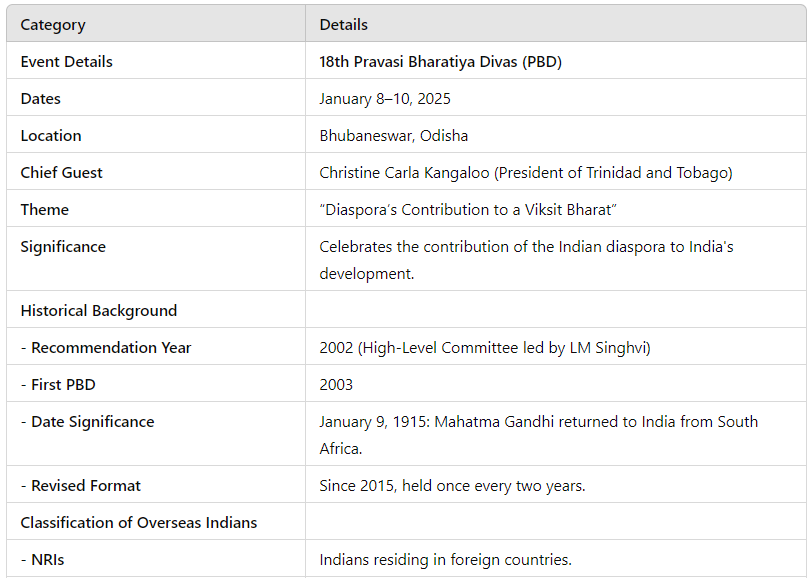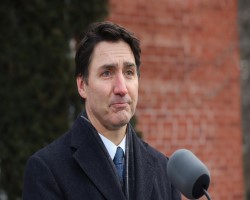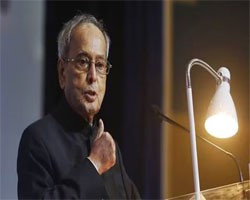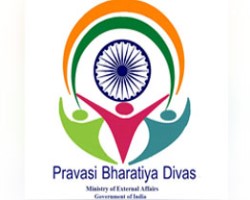Banking Current Affairs
TABLE OF CONTENTS |
| Persons in News |
|---|
|
|
|
Why in the news?
Canadian Prime Minister Justin Trudeau has announced his resignation as the leader of the ruling Liberal Party after nearly a decade in power. He will remain as a caretaker prime minister until a new leader is elected. His resignation follows internal party issues and declining public support, coinciding with growing support for opposition leader Pierre Poilievre and the Conservative Party. Key Takeaways: Reason for Resignation: Trudeau cited internal party conflicts and declining public support as major reasons. He acknowledged his inability to lead the Liberal Party to victory in the next general election. National polling averages show rising support for the Conservative Party. Trudeau’s Vision vs Poilievre’s Vision: Trudeau criticized opposition leader Pierre Poilievre’s policies, particularly on climate change, as unsuitable for Canada. Poilievre’s agenda focuses on reducing taxes, stricter immigration controls, and capping government spending. Trudeau’s Legacy: Support for Ukraine: Advocated for Ukraine during the Russia-Ukraine war. COVID-19 Management: Effectively handled the pandemic. Climate Change Policies: Advanced significant climate action plans. Economic Preparation: Focused on preparing Canada’s economy for the future. Regret About Electoral Reform: Trudeau expressed regret for not reforming Canada’s electoral system, which would have allowed voters to rank their preferences. Parliamentary Suspension: Canada’s parliament will be suspended until March 24 to allow time for the Liberal Party to select a new leader. Poilievre’s Reaction: Pierre Poilievre labeled Trudeau’s tenure as a “dark chapter” and emphasized his vision to “take back control” of Canada’s policies. His agenda includes reducing taxes, securing borders, and strengthening national defense. Transition Period: Trudeau will serve as a caretaker prime minister until a new leader is elected by the Liberal Party. Significance: Trudeau’s resignation marks the end of an era in Canadian politics, potentially paving the way for a shift in policies under new leadership. This decision comes at a critical time with growing support for the Conservative Party, highlighting the dynamic changes in Canadian political landscapes. |
|
|
|
Why in the news?
The Central Government has announced the establishment of a memorial for former President Pranab Mukherjee at the Rashtriya Smriti Sthal, part of the Rajghat precinct in Delhi. Mukherjee, who passed away on August 31, 2020, was a distinguished Congress leader and the 13th President of India. Prime Minister’s memorials: No common place for Memorial is designated for Prime ministers as different PMs have different places for memorial. Eg. When Nehru died, in May 1964, a space adjoining Raj Ghat was earmarked for his last rites and his memorial named Shanti Van whereas the memorial of Morarji Desai, called Narayan Ghat is at Ahmedabad. Also, V P Singh does not even have an official memorial. Delhi Memorials (most are in Delhi): Mahatma Gandhi → Raj Ghat: "Gandhi was the Father of the Nation, the King (Raj) of simplicity." Jawaharlal Nehru → Shanti Van: "Nehru dreamed of peaceful (Shanti) gardens (Van)." Lal Bahadur Shastri → Vijay Ghat: "Shastri's victory (Vijay) in war is remembered." Indira Gandhi → Shakti Sthal: "Indira's strength (Shakti) as a leader." Rajiv Gandhi → Vir Bhumi: "Rajiv, the brave (Vir) leader, rests here." Charan Singh → Kisan Ghat: "Charan Singh, champion of farmers (Kisans)." Chandra Shekhar → Jannayak Sthal: "Chandra Shekhar, the leader (Nayak) of people (Jan)." Atal Bihari Vajpayee → Sadaiva Atal: "Atal, forever steadfast (Sadaiva)." V. Narasimha Rao → Gyan Bhumi: "Narasimha, the scholar (Gyan)." Ahmedabad Memorials: Gulzarilal Nanda → Abhay Ghat: "Gulzarilal, a fearless (Abhay) leader." Morarji Desai → Narayan Ghat: "Morarji, inspired by Narayan ideals." Other Delhi Memorials (combine in pairs for simplicity): Giani Zail Singh → Ekta Sthal: "Unity (Ekta) symbolized by Zail Singh." Shankar Dayal Sharma → Karma Bhumi: "Sharma's dedication (Karma)." Jagjivan Ram → Samata Sthal: "Equality (Samata) championed by Jagjivan Ram." Devi Lal → Sangharsh Sthal: "Devi Lal’s struggle (Sangharsh) for farmers." K. R. Narayanan → Uday Bhumi: "Narayanan, a rising (Uday) leader." India’s first President Rajendra Prasad has a memorial in Patna (he belonged to Bihar) called Mahaprayan Ghat. Dr B R Ambedkar’s memorial called Chaitya Bhoomi is located next to Dadar Chowpatty in Mumbai. |
| Important Days |
|
|
|
Why in the news?
Trinidad and Tobago President Christine Carla Kangaloo will be the chief guest at the 18th Pravasi Bharatiya Divas (PBD) program to be held in Bhubaneswar from January 8 to 10. Notably, the Pravasi Bharatiya Divas is celebrated on 9th January since 2003 to mark the contribution of the Overseas Indian community in the development of India. Key Takeaways : 1. A High-Level Committee on Indian Diaspora, headed by jurist and Parliamentarian LM Singhvi, had recommended in January 2002 that the government must renew and strengthen linkages of overseas Indians to their place of origin, and with each other. 2. The committee recommended that a Pravasi Bharatiya Bhavan should be set up to emerge as the focal point for networking between India and its overseas Indian community; and as a suitable place which to commemorate the stories of the Indian Diaspora. The idea of a day to have the government recognise the community flowed from this, and was held in 2003. 3. January 9 was chosen as the day to celebrate this occasion since it was on this day in 1915 that Mahatma Gandhi returned to India from South Africa, led India’s freedom struggle, and changed the lives of Indians forever. Since 2015, the centenary year of Gandhi’s return, the format was revised for the meeting to be held once every two years. 4. The 18th Pravasi Bharatiya Divas Convention is being organized in partnership with the State Government of Odisha from 08-10 January 2025 in Bhubaneswar. This year’s theme of Pravasi Bharatiya Divas is “Diaspora’s Contribution to a Viksit Bharat”, aimed at celebrating the bond between India and its overseas Indian community. Classification of Overseas Indians 1. Overseas Indians are classified into three categories: Non-Resident Indians (NRIs), Persons of Indian Origin (PIOs), and Overseas Citizens of India (OCIs). 2. NRIs are Indians who are residents of foreign countries. The PIO category was abolished in 2015 and merged with the OCI category. 3. According to the Ministry of External Affairs, PIO refers to a foreign citizen (except a national of Pakistan, Afghanistan, Bangladesh, China, Iran, Bhutan, Sri Lanka, and Nepal) who at any time held an Indian passport, or who or either of their parents/grandparents/great-grandparents was born and permanently resided in India as defined in the Government of India Act, 1935, or who is a spouse of a citizen of India or a PIO. 4. A category of OCI was carved out in 2006. An OCI card was given to a foreign national who was eligible to be a citizen of India on January 26, 1950, was a citizen of India on or at any time after January 26, 1950, or belonged to a territory that became part of India after August 15, 1947. Minor children of such individuals, except those who were a citizen of Pakistan or Bangladesh, were also eligible for OCI cards. Pravasi Bharatiya Samman Award (PBSA): 1. An award called The Pravasi Bharatiya Samman Award is given out as part of the Pravasi Bharatiya programme. According to the official website, “It is the highest honour conferred on a Non-Resident Indian, Person of Indian Origin; or an organisation or institution established and run by them.” 2. The award is to commemorate the contribution of the Indian diaspora to create a better understanding of India abroad, support India’s causes and work for the welfare of the local Indian community. 3. As many as 27 individuals and organisations will be honoured this year, from countries like the US, Fiji, Guyana, Mauritius, Moldova, Myanmar, Russia and Saudi Arabia. President Droupadi Murmu will confer the Pravasi Bharatiya Samman during the valedictory session of the PBD Convention. History of the Indian expat: 1. The Indian diaspora has grown manifold since the first batch of Indians were taken to counties in the east pacific and the Caribbean islands under the ‘Girmitiya’ arrangement as indentured labourers. 2. The 19th and early 20th centuries saw thousands of Indians shipped to those countries to work on plantations in British colonies, which were reeling under a labour crisis due to the abolition of slavery in 1833-34. 3. As part of the second wave of migration, nearly 20 lakh Indians went to Singapore and Malaysia to work in farms. The third and fourth wave saw professionals heading to western countries and workers going to the Gulf and west Asian countries in the wake of the oil boom. 4. The Indian diaspora is now over 35.4-million strong, with 19.5 million Persons of Indian Origin (PIOs) and 15.8 million NRIs. The US and the UAE are home to the largest groups of diaspora, with over 2 million PIOs in the US and more than 3.5 million NRIs in the UAE. These communities continue to play a crucial role in India’s economy, besides solidifying ties with these nations.  
|
|
<< 8-Jan-25
|
|
|


